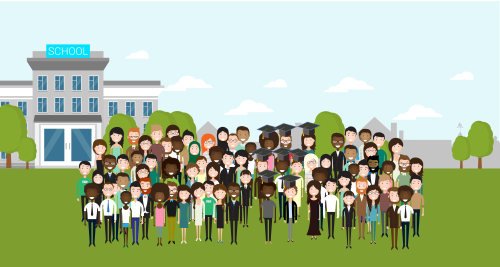Helping young people prepare to engage in work and life as productive adults is a central task for any society. But after the great K-12 conveyer belt of education ends in the United States, young people out of high school face a landscape of college and training options that can be confusing, difficult to navigate, and financially out of reach—and they also face a labor market that favors those with college degrees.
A difficult school-to-work transition
It’s a small wonder then, that some young people are struggling. In a new analysis, my colleague Natalie Holmes and I found that 17 percent of all 18 to 24 year-olds, or 2.3 million people, in the nation’s largest cities and counties are out of work. Nationally, there are 5 million such young people.
On the whole, their circumstances suggest a difficult transition to adulthood. Only 36 percent worked in the past year, compared to 69 percent of all young adults. Twenty percent left high school before completion, and another forty-three percent report that a high school diploma is their highest level of educational attainment. Only 17 percent are in school, compared to 53 percent of all young adults. (Since so many young adults are in school, and school enrollment affects labor market behavior and prospects, we did not include all students in the analysis. See the footnote at the end of the post for more information about which students we included in the analysis.)
The relative size of the young adult out-of-work population varies considerably by geography but tracks with the general economic and demographic characteristics of places. They make up a full one-third of all young adults in Detroit, and about one-quarter in the Bronx in New York City, several counties in California, and in Hidalgo County, Texas. These places have fairly low employment rates and levels of educational attainment, and tend to specialize in industries that do not require college degrees, such as agriculture, manufacturing, and distribution and logistics. On the other end, 10 percent or less of the young adult population is out of work in cities like Boston and Seattle, as well as in Wake County, North Carolina (encompassing Raleigh), Hennepin County, Minnesota (encompassing Minneapolis), and Denton County, Texas in the Dallas-Fort Worth region. These places all have high employment rates and levels of education, and specialize in sectors requiring higher levels of education, such as professional, scientific, and technical services.

Based on their education and work history, most out-of-work young adults face limited job opportunities
To better understand the circumstances and future labor market prospects of out of work young adults, we used a cluster analysis to segment them into five groups, roughly sorted by age and education.

The largest share—37 percent—is between the ages of 18 to 21 and has at most a high school diploma. The second largest share—25 percent—is between the ages of 22 to 24 and is also made up of people with no more than a high school diploma. These two groups have the least work experience of all the out-of-work groups, the lowest rates of school enrollment, and the highest rates of parenthood. They are the least prepared to find and keep jobs enabling upward mobility, and remember, they account for about two-thirds of all out-of-work young adults. They are a prime example of what happens in a country that has, as one article described, “arguably one of the least effective systems for preparing non-college bound youth for the workforce in the Western World.”
Those in the next two largest groups, accounting together for about 30 percent of out-of-work young adults, all have post-secondary experience, and a small share has associate or bachelor’s degrees. About half of those ages 18 to 21 are in school, as are about one-quarter of those ages 22 to 24. They have the strongest interest in finding work among the groups and relatively strong work histories.
And lastly, the smallest share of the out-of-work, coming in at 6 percent, consists of young people with bachelor’s degrees coming from families with high median incomes. Based on the much lower unemployment rates of people with bachelor’s degrees, they are the most likely to find work.
We need better education and skill-building opportunities
So what do we do? There is no shortage of ideas and examples of how to reform education and training, and promote stronger pathways into the workforce. They include:
- Re-engagement centers to connect young people without a high school diploma to education and training options
- More job training programs tailored to local economic conditions
- Better options to help people with low literacy and math prepare for job training or post-secondary education
- Continued focus on reforms and supports to ensure that students who enroll in college complete college
What we lack is a sense of urgency, political will, and imagination. We should tap into the intelligence and assets of the young people described above, and help them grow into their potential. We do ourselves no favors when we consign millions of people to the margins of the labor market when they could be helping to shape our collective future.
Because we focused on identifying the most economically vulnerable young people, we excluded most college and graduate students from our analysis on the grounds that they appear to be on track. As a rough proxy for students who need to work to support themselves or pay for tuition, we only included college students who are actively seeking work and not living in dorms.







Commentary
Most out-of-work young adults face bleak job prospects
May 16, 2019